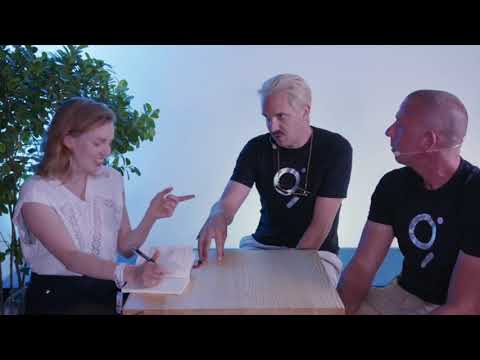Introduction
In this video, we will delve into a transcript of an interview on cLabs Pirate Radio with Anna Rose and two representatives from The Graph, Simon and Nader. They discuss the concept of The Graph and its role in the decentralized network space. The tutorial will cover the following topics:
- Introduction to The Graph
- Understanding The Graph: Querying Data
- Decentralization of The Graph
- Validation and Incentives
- The Graph as a Protocol
- Launch and Decentralization of The Graph
- Interoperability and Cross-Chain Support
Let’s explore these topics in more detail.
Introduction to The Graph
The Graph is a decentralized network of subgraphs that aims to provide fast query access to various types of data, including data from blockchains like Ethereum and networks like IPFS. It enables developers to build snappy user interfaces (UIs) that display complex data from these networks in a matter of seconds.
Understanding The Graph: Querying Data
The Graph functions as an indexing layer, similar to a library catalog. In the blockchain context, the blockchain itself is like a library, and the subgraphs are the indexes for specific types of data. Without an index, finding specific data within the blockchain would be time-consuming and inefficient.
The Graph solves the problem of querying blockchain data by providing an indexing layer that aggregates and organizes data from various sources. Developers can write code that describes the data they want to access and deploy it on indexers. These indexers serve the queries and make the data available through APIs.
Decentralization of The Graph
The decentralized nature of The Graph ensures that it does not rely on a single point of failure. Indexers, who participate in the protocol, run decentralized nodes and infrastructure. They serve queries from multiple subgraphs, promoting decentralization and preventing centralization of data.
Validation and Incentives
The Graph incorporates mechanisms to ensure data integrity and incentivize participants to serve accurate data. Validators are incentivized to provide correct data, as they may face penalties if they serve incorrect or improper data. This incentivization is achieved through slashing, where validators lose money for incorrect data. These mechanisms are built into the protocol’s smart contracts, following principles of game theory and cryptoeconomics.
The Graph as a Protocol
The Graph is built on Ethereum and governed by smart contracts living on the Ethereum blockchain. While Ethereum is the mainnet network, The Graph also supports other networks through a centralized hosted service. However, the recent launch introduced the decentralized network on the mainnet Ethereum.
Launch and Decentralization of The Graph
The Graph project underwent a proof-of-concept phase, where they validated the idea before moving towards decentralization. The Graph’s mainnet launch took place a couple of weeks ago, enabling developers to deploy subgraphs in a decentralized manner. Previously, subgraphs were deployed on a hosted service, which is more centralized. With the mainnet launch, developers can signal the quality of subgraphs and have decentralized indexers serve them.
Interoperability and Cross-Chain Support
The Graph is designed to be blockchain agnostic, meaning it can support multiple blockchain networks. Currently, the Graph has integrated with Ethereum Virtual Machine (EVM)-compatible chains like Polygon and Binance Smart Chain. Deploying subgraphs on other networks would require deploying specific contracts related to indexing, with the ability to bridge back to Ethereum.
The ultimate vision of The Graph is to enable interoperability across multiple chains, allowing developers to access and combine data from different chains into a single API call. While privacy is not a primary focus of The Graph, the protocol is designed to facilitate interoperability by allowing developers to seamlessly access and combine data from different blockchain networks into a single API call. This cross-chain support opens up possibilities for building complex decentralized applications that require data from multiple chains.
To achieve interoperability, The Graph is working on integrating with various blockchain networks and expanding its support beyond Ethereum and EVM-compatible chains. The Graph team is actively researching and exploring ways to bridge data from other chains back to Ethereum, allowing developers to query and utilize that data within The Graph ecosystem.
The Graph’s approach to cross-chain support involves deploying specific contracts related to indexing on each targeted blockchain network. By doing so, they can capture and organize data from those networks and make it accessible through The Graph’s querying infrastructure. This allows developers to build applications that leverage data from multiple chains without needing to interact with each chain separately.
Additionally, The Graph is actively engaging with other projects and communities to collaborate on cross-chain initiatives. By fostering partnerships and collaborations, The Graph aims to contribute to the overall growth and development of the decentralized ecosystem by enabling seamless data access across different chains.
Overall, The Graph’s focus on interoperability and cross-chain support highlights its commitment to building a robust and versatile decentralized network. By bridging data from various chains, The Graph empowers developers to create innovative applications that leverage the strengths and features of multiple blockchain networks.
That concludes our overview of the cLabs Pirate Radio interview with Anna Rose and representatives from The Graph. We explored the concept of The Graph, its role in decentralized networks, querying data, decentralization, validation and incentives, protocol architecture, the mainnet launch, and cross-chain support. The Graph’s vision for enabling fast and reliable data access across different chains holds great potential for the future of decentralized applications and the broader blockchain ecosystem.
